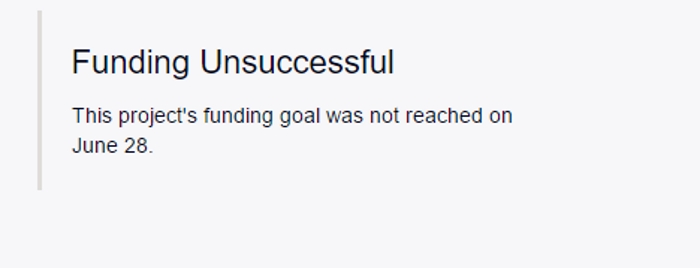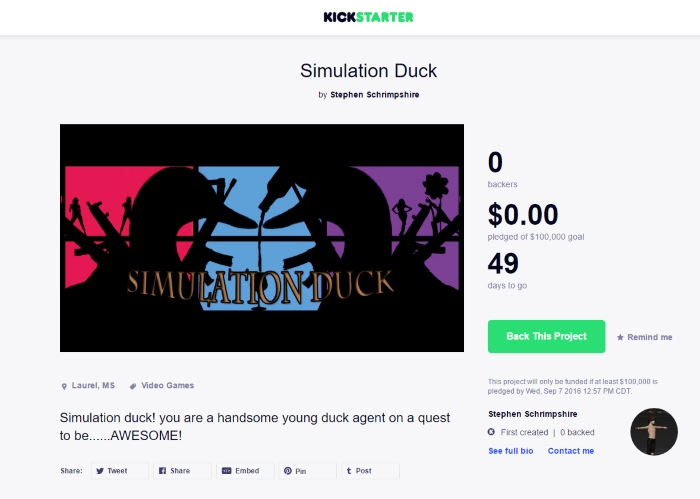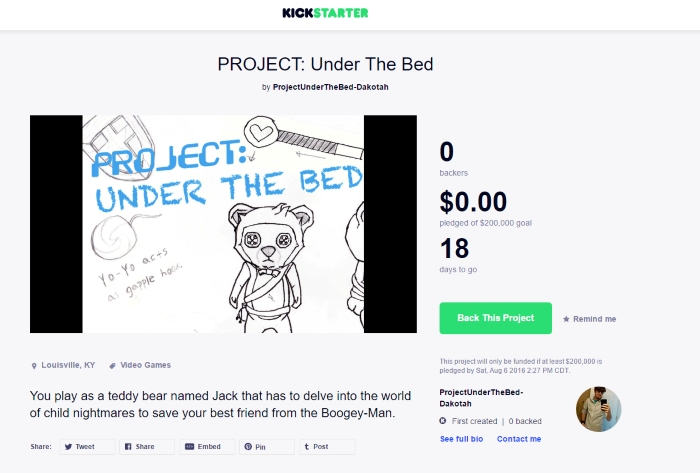Crowdfunding has opened the floodgates for creatives to bring new and exciting ideas to the world. This is awesome. The rise of indie developers, self-published authors, and artists is a welcome sign of the times.
Unfortunately, some people want to jump right in and start asking for money. Often, they do this without giving serious thought or consideration to what they will offer in return. I refer to this as trying to sell an idea instead of a plan. Here’s why it’s a huge turnoff for potential backers.
Let’s establish what I mean by selling an idea. Ideas are whimsical, non-tangible thoughts. Our society places value on the concept of “great” ideas. While some might argue that not all ideas are inherently great, that isn’t what this is about. Even bad ideas can have some value, just not by themselves.
The issue I see in placing value on an idea is that, unless cultivated, an idea on its own will never amount to anything. Rather, we should give value to the plans and projects born from these ideas. Value comes from the steps that mold an idea into something usable.
Okay, some of you are rolling your eyes now. I get it. Everyone knows the difference between an idea and a project. Except, judging by some of the campaigns that get posted on crowdfunding platforms, they actually don’t.
I debated including examples, because I don’t wake up in the morning planning to destroy hopes and dreams. However, part of the problem might be people not realizing they are selling an idea, instead of a project. For example, here’s the Kickstarter Campaign for Simulation Duck.
For the sake of context, the developer, Stephen gives us a quick rundown of the game.
“So in this game you play the role of a duck with a mind set on being awesome. Sadly your older sibling who is a evil doctor is trying to stop you. you live in a life with humans but dress like a stiff and are respected by those around you.”
And that’s all he wrote. He mentions the game being a work in progress. However, aside from the image at the top we have no clue what sort of progress has been made. There must be something, surely. He’s asking for $100,000. He plans to release the game about a month after the conclusion of the Kickstarter. Some work must already be complete.
Why this won’t get crowdfunding
When you set up your campaign you want to bring everything you have to the table. Or at least all the good things. If any work has already been done, mention that and (if possible) show it off. Otherwise, the idea is the only part of the project that exists. Here, even that is nebulous at best.
We aren’t even given a hint about where the game is in terms of development. Add to that a hefty price tag with zero explanation of what those funds are covering and it’s hard to feel confident in Simulation Duck.
On the other side of the spectrum are developers who know they are just pitching an idea and don’t understand why that’s a problem. Let’s take a look at the Kickstarter Campaign for Project: Under the Bed.
This developer freely admits that this is an idea he, “came up with that is in EXTREMELY early stages.” He has helpfully provided some “concept” drawings to demonstrate, um, a bear and what could be some sort of weapons? These are the only pictures available, but he does give a quick paragraph covering the game’s story, such as it is.
He goes on to explain that while he doesn’t have any of the skills required to actually make his vision, he would like to raise $200,000 on Kickstarter. The funds would pay a “crew” to draw, program, and design the game for him. While, he makes no mention of what his contribution would entail beyond the initial idea, the funding is also paying to support his family while he works on the game full-time.
Why this won’t get crowdfunding
The idea itself isn’t terrible. Hell, it might make for an interesting game. This campaign does nothing to demonstrate that. There is no mention of what sort of game he intends to turn this into (action plat-former, visual novel, space shooter?) nor how he’s going to actually make or market the game outside of paying other people, who may or may not have any skills, to do it for him. Sure, it would be nice to get even a vague idea of what style the future artists might use, but they don’t exist yet.
Shoddy artwork aside (not everyone is van Gogh), there is literally nothing else presented to consider. All for the hefty and poorly-defined price of $200,000, which most of us will recognize as a whole lot of money. He could take his “concept” art to a few artists and get them to do some proper mock-ups. He could take some programming classes or craft a really amazing business plan. He could do something to prove the same level of investment in his idea that he asks from backers.
I mean, I get it. I’d like to support my family with scrappy ideas I jotted down over coffee too. Even good ideas need a little help though, especially if you intend to have other people paying for them.
For an idea to become marketable you need to demonstrate what and how you will go about making your project. You don’t have to make a full game before asking for funding, but you need to show a willingness to work for the money you request. Often, by doing some of the work on your own dime. At the end of the day, crowdfunding is still about earning money, not just politely asking for it because you think it would be neat to have.







[…] until the project is ready. Backers are looking to fund development of a game they’ll love, not a cool idea you had in the shower one day. The reemergence and success of Mutant Football League is a perfect […]
[…] written before about how crowdfunding supports actual projects, not cool ideas. Anyone can have an idea, but it’s a lot harder to turn that idea into a functional project. Just […]